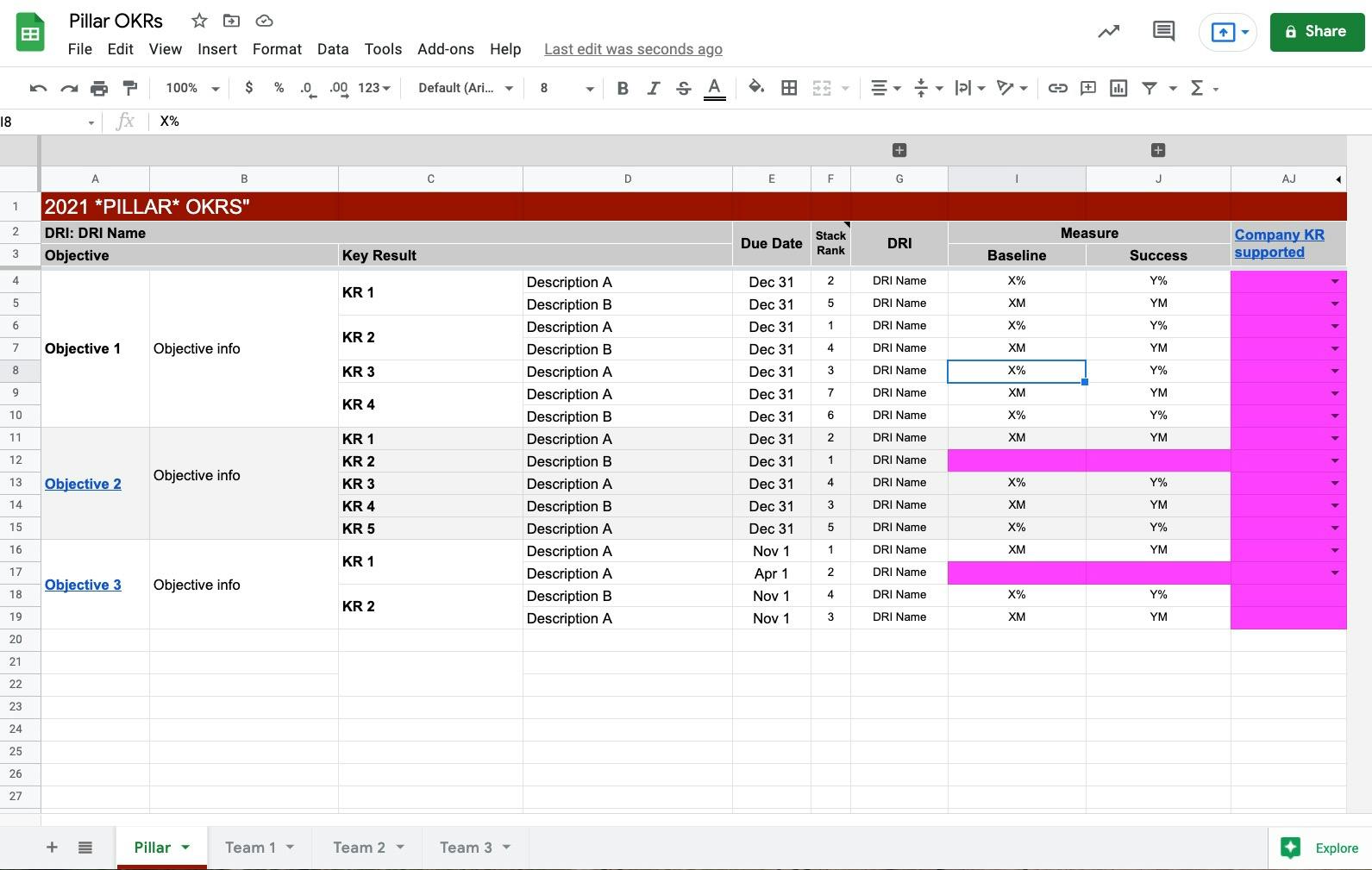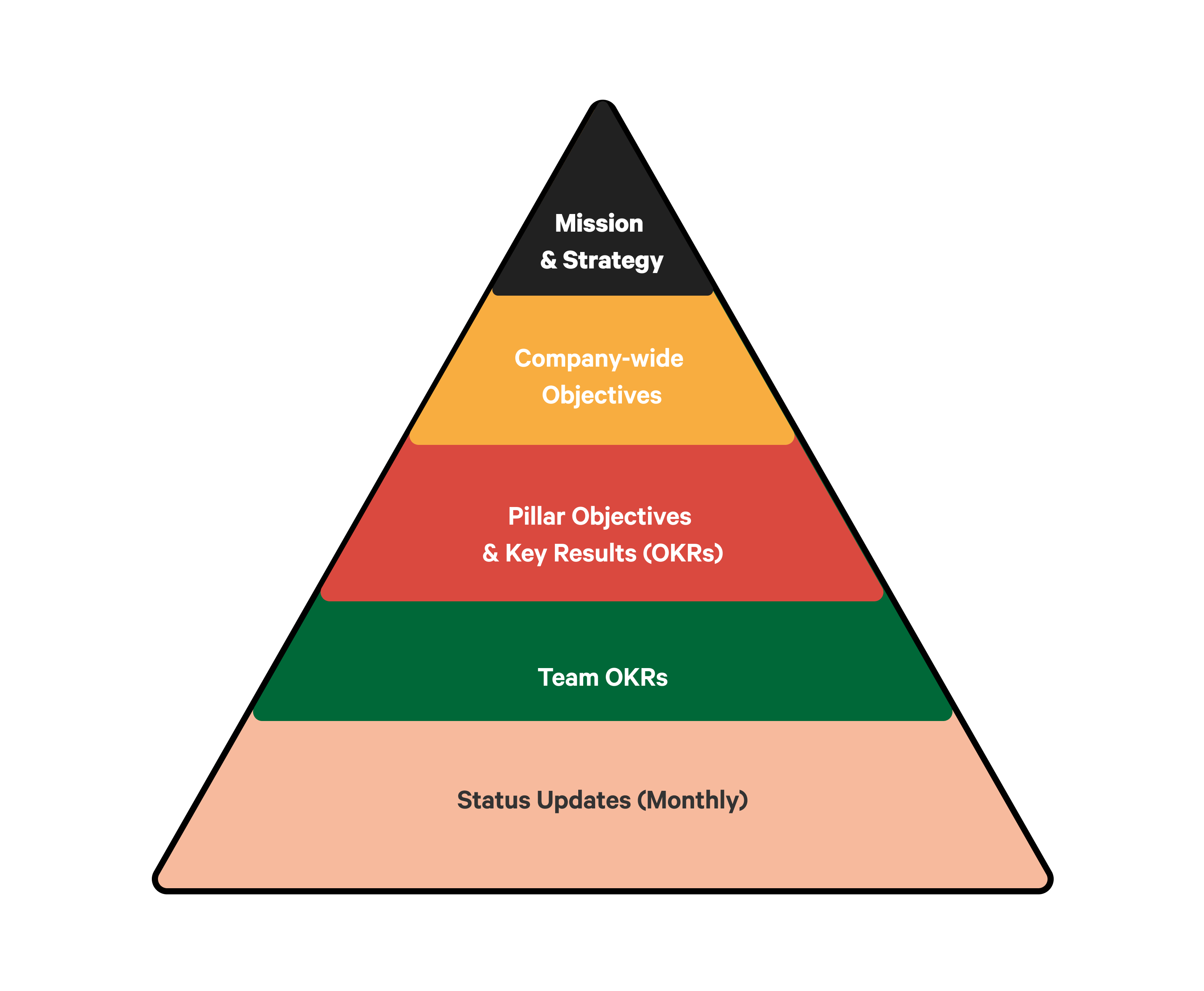
This doc includes Pinterest’s . Feel free to create a copy and customize it for your own team.
Copy template
History: Our Journey into OKRS
If you’re not familiar, OKRs (Objectives & Key Results) were originally created by Andy Grove to track goals at Intel. John Doerr, a then-salesmen at Intel, carried the to his new job at venture capital firm Kleiner Perkins. He then introduced OKRs to Google — one of Kleiner Perkin’s investments — who, according to Google co-founder Larry Page, used them to propel 10x growth on multiple occasions. If you want to learn more about how Google uses OKRs, I recommended watching this .
Our problem: Scaling OKRs


How Pinterest structures OKRs
Name
Definition
Examples
Name
Definition
Examples
1
Company
Annual company plan
Top Line Output Metrics: Engagement, Revenue, Employee NPS, Developer Velocity, etc
2
Pillar
Strategic focus area
Input & output metrics that ladder into our company objectives and key results
3
Team
A group of 7-12 people focused on a pillar’s objective
Input metrics or tactical projects
4
Individual
An individuals half-yearly goals
Projects to contribute to or complete
There are no rows in this table
Planning


Operating Cadence

Solution: Pyramid OKR Tracker
Goal
Description
Questions to answer
Goal
Description
Questions to answer
1
Transparency from the top objectives to the bottom key results so that leadership to individuals are aligned.
As more teams and people get added to our org, ensuring key individuals have the ability to easily understand and action OKRs across the business.
2
Efficiency so that the team can focus on doing the work and not on the tracking of the work.
Scaling the team means that as complexity grows, the time to manage the process doesn’t.
3
Stability of a foundation that we can grow and build on.
Creating the right structure from the tops down with the tooling to support.
There are no rows in this table

Interested in deploying an OKR system at your company?
Want to print your doc?
This is not the way.
This is not the way.

Try clicking the ⋯ next to your doc name or using a keyboard shortcut (
CtrlP
) instead.